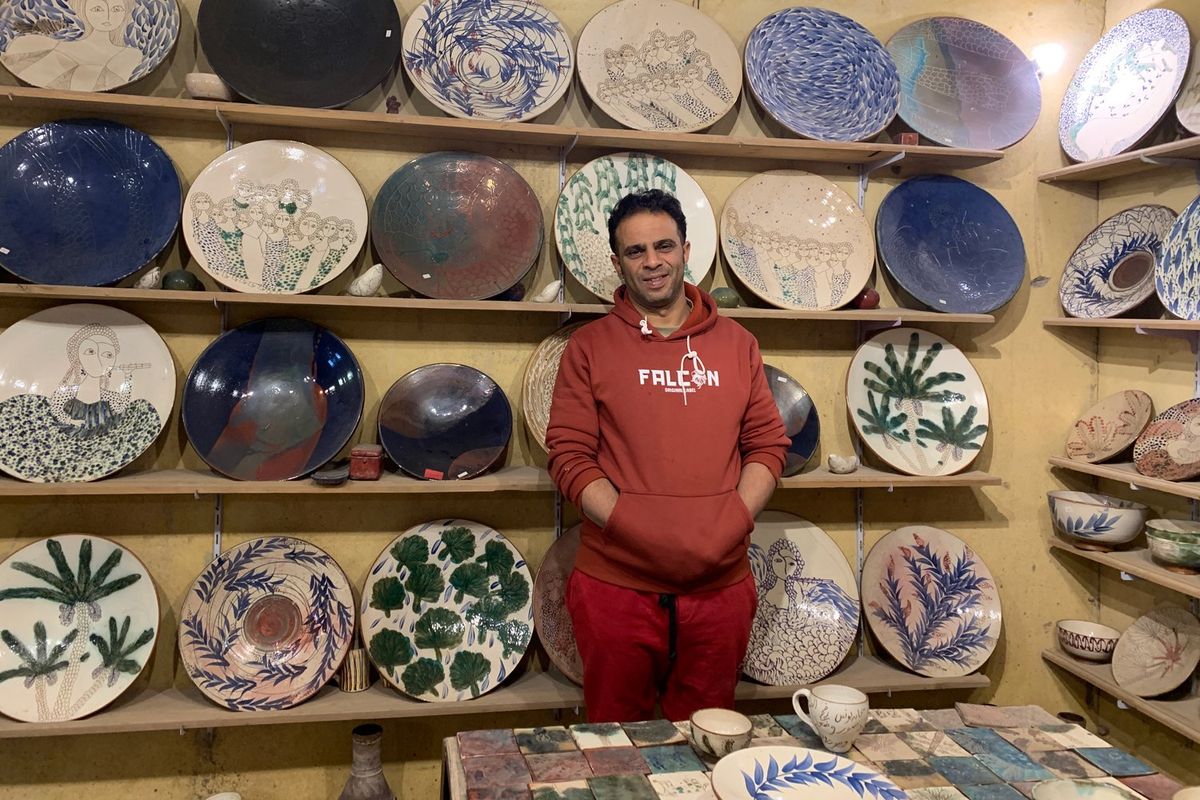
Potter and ceramic artist Ibrahim Samir in his workshop in Tunis village.
Photo by Amuna Wagner for OkayAfrica.
SEARCH

Potter and ceramic artist Ibrahim Samir in his workshop in Tunis village.
In the Egyptian desert, El Fayoum blooms and at its heart a vibrant artistic community is celebrating it through beautiful pottery and community learning.